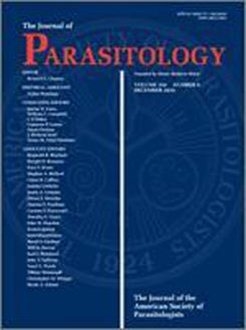The prevalence of ectoparasites and intestinal helminths of different pigeon taxa in Medina, Saudi Arabia, with special emphasis on the feral pigeon, Columba livia domestica (Columbiformes: Columbidae), was evaluated. Fifty-four pigeons were examined externally for ectoparasites and 28 feral pigeons were examined for helminths. Two ectoparasites were recorded on feral C. l. domestica (Harami) pigeons, including the shaft louse Menopon gallinae (Phthiraptera: Menoponidae), and the pigeon fly, Pseudolynchia canariensis (Diptera: Hippoboscidae), with 100 and 88.90% prevalence, respectively. Ectoparasites were also collected from 5 other breeds of C. l. domestica (Pakistani, Farensi, Turki, Kori, and Qatifi). Menopon gallinae infected Pakistani, Farensi, and Turki pigeons with 100% prevalence. A third ectoparasite, the brown poultry louse, Goniodes dissimilis (Psocodea: Philopteridae), infected Farensi, Turki, and Kori pigeons at rates of 100, 50, and 50%, respectively. Qatifi pigeons were not infected with any ectoparasites. Two types of intestinal helminths were recovered from feral pigeons: cestodes of Raillietina spp. (Cyclophyllidea: Davaineidae) and nematodes of Ascaridia sp. (Ascaridida: Ascaridiidae) (with 10.71 and 3.57% prevalences, respectively). To the best of our knowledge, this is the first study to shed light on the parasites of pigeons in Medina, Saudi Arabia.
How to translate text using browser tools
20 November 2020
Ectoparasites and Intestinal Helminths of Pigeons in Medina, Saudi Arabia
Medhat Ali,
Reda Ibrahim,
Saeed Alahmadi,
Hayam Elshazly
ACCESS THE FULL ARTICLE

Journal of Parasitology
Vol. 106 • No. 6
December 2020
Vol. 106 • No. 6
December 2020
Ascaridia
ectoparasites
Goniodes dissimilis
intestinal helminths
Menopon gallinae
pigeons
Pseudolynchia canariensis





